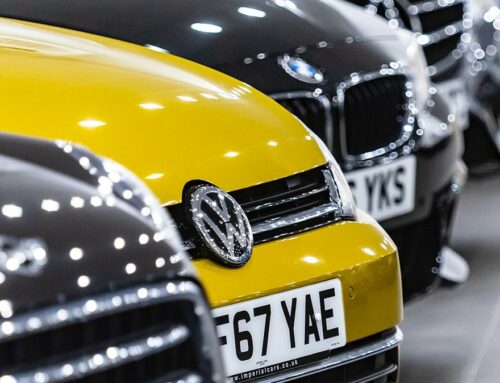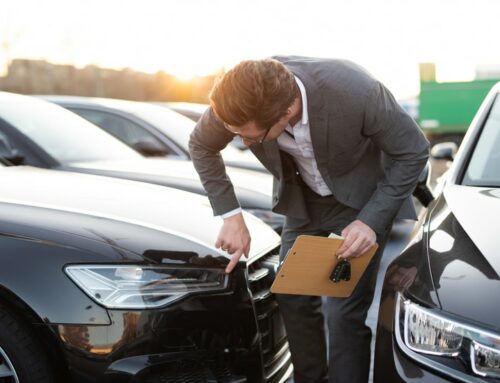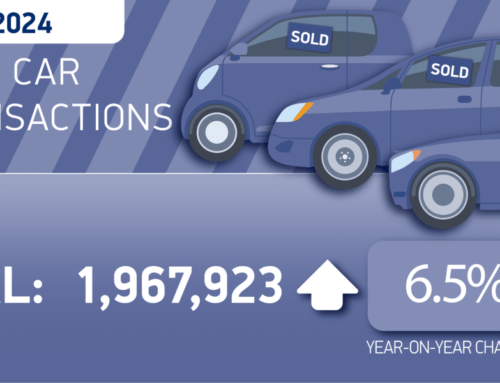Going digital or ‘digitization’, as our US friends prefer to term it, means very different things to different people. For some, it’s about putting a website out there and detailing all your latest stock on it. Others are now offering an App, linked pop-up screen on their website, offering browsers the opportunity to book in a test drive of the car that they are checking out online.
Others are putting live web chat facilities on their websites to help browsers with any queries after they’ve been onsite for a set amount of time. These are all good examples of ‘digitisation’ in our market and they should be commended. They offer the dealership the opportunity to cut time to, and cost of, sale considerably, while improving online customer experience.
However, according to leading management consultant McKinsey & Co, the proliferation of digital tools thus far is just the tip of the digital iceberg. The car market will see a ratcheting up of ‘digital intensity’ over the next few years and some of these changes could prove seismic. So it’s best to begin devoting budgets to planning for digital intensification ahead of its arrival.
Let’s have a quick look at what’s happening in our market right now. There are 4 key changes afoot:
1. In Europe we’ve seen a slowdown in sales of new cars, most notably in France, Greece, Spain, Italy and Portugal – with total new car sales in 2015 rising 9.3% year-on-year to 12.8m which is 30% down on the heady pre-recession days of 2007. The UK has the best results of the whole of Europe with growth at around 11%. McKinsey & Co predicts that between 2016-2020 we will see growth percentages roughly halve globally – settling at around 5% by 2020.
2. Simultaneously, we are seeing technology-driven disruption (or should we say innovation) coming through in spades. Uber and other e-hailing and car sharing services are hitting the streets all over the world and this will inevitably create an environment in which less people will be inclined to go out and buy new cars.
McKinsey & Co again puts some projected numbers around this, estimating that changing car usage behaviour and the explosion of what they call ‘mobility services providers’ could mean an aggregate reduction of up to two million new cars being sold worldwide each year by 2030. Interestingly, early adopters of mobility services drive themselves 20% less after they’ve used a service like Uber. And the next generation of potential car buyers – the Millennials – are of course early adopters of these services.
3. Also on the technology side, we are seeing intelligent cars on our roads in increasing numbers, as the forerunners of autonomous vehicles which will not be seen in significant numbers for perhaps another decade. But after that who knows? In the meantime, intelligent cars will offer increasingly sophisticated assisted driving and parking capabilities. They may also offer car to car communications for collision prevention and will be packed with infotainment offerings, sensors, software and networking capability.
4. We are beginning to see the first glimpses of where all this new technology and digitisation could take us with Uber’s first driverless taxis going live in Pittsburgh just last month. We are also seeing the inexorable move from diesel and petrol dominated drives, to hybrid and all electric vehicles coming through in the next 10 years, pushed along by EU legislation which may well mandate minimum 60 miles per gallon vehicles by 2025.
If at first glance this list looks like a recipe for ‘disruption overload’ – fear not. What the management consultant boffins are saying is that the UK is better equipped for digitisation than even the US, because more of us are happier to buy more stuff online already. And providing online processes are properly joined up, many of us are even prepared to buy our cars via the click of a mouse, as long as we have a nearby dealership to show us the car options and help finance, service and support the mighty purchase.
So how should dealers respond now to impending digitisation? The first thing to think about is properly segmenting your customer-base by value and behaviour traits, or ‘personae’ in the digital marketing jargon.
Once you’ve defined their value and digital savoir fair, the next element to consider is tailoring digital customer experience according to these digital personae. It is important to look at every online process with a view to delivering a joined up customer experience. If there is scope for an online-only process to break it almost certainly will as the clicks multiply. Very often, when firms begin deploying new digital strategies they find massive spikes in calls into their contact centres as people hit blockages in ill-thought out systems. You must monitor cross-channel journeys for pain points and opportunities to improve, and then devote budget to tightening systems wherever possible.
You also need a clear top-down digital strategy and senior level management support to make it happen. You will need IT budget to help you invest in the technology to migrate. Right now 60% of firms have no digital migration budgets at all. This is starting to become a real problem as digital sticking plasters won’t do for very much longer.
Some may go for more radical solutions. For example, Daimler in China has introduced its own car sharing services under the banner Car2Share in four major Chinese cities. For others it simply about moving more sales online. So now that you’ve seen how successful your app for booking test drives works to increase bookings and subsequent sales, is now a good idea to plan out the next stage of your digitisation plan?
You might encourage more visitors to your website to browse and select the car they want, even specifying it online, selecting interior finishes, F&I and even after sales packages. You might well be able to offer discounts for closing out sales online, with some web chat support perhaps. This way you are passing on a little of the substantial savings you are making by taking this order via your website.
For many, that plan is just far too much, far too fast. For them it may be a good idea to take digitisation in bite size chunks, focusing on joining up processes and improving the online customer experience by so doing. So if an existing customer has selected and bought an after care package, wouldn’t it be great if you could not only deliver the PDF policy document via email, but also a Frequently Asked Questions page linked to the policy they’ve taken out?
They might even be advised of your mobile app to help them with any servicing queries, together with an opportunity to book in a service or receive early notifications of pending servicing considerations. In this way we are starting to move into the world of digital self-service. And we all know, if it works we keep coming back and keep talking about it positively – and by so doing convert others to doing the same thing. The DVLA’s road tax renewal purchasing system is just one great example of where digital self-service is so much better, quicker and cheaper than the old way that people sing its praises regularly. Can you make your dealerships’ online customer experience anywhere near as good as that?
By Paul Smith, Director, Traka Automotive







Leave A Comment